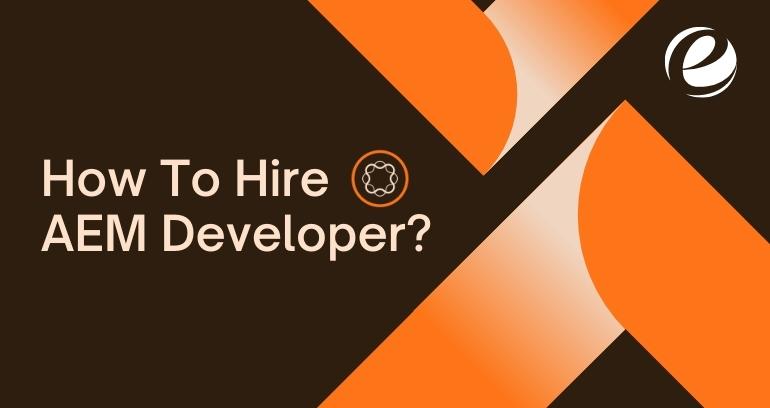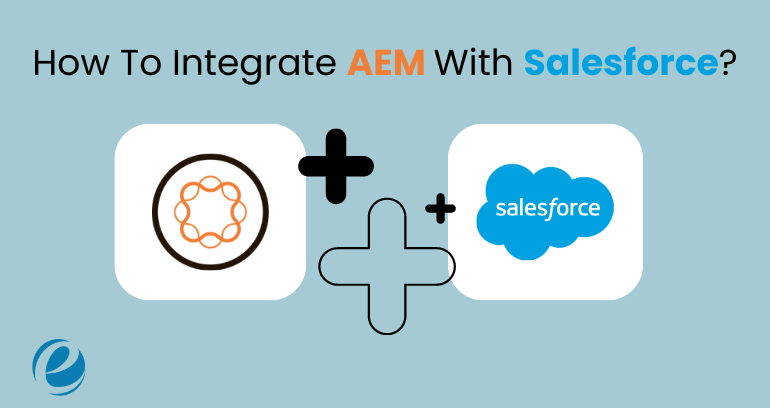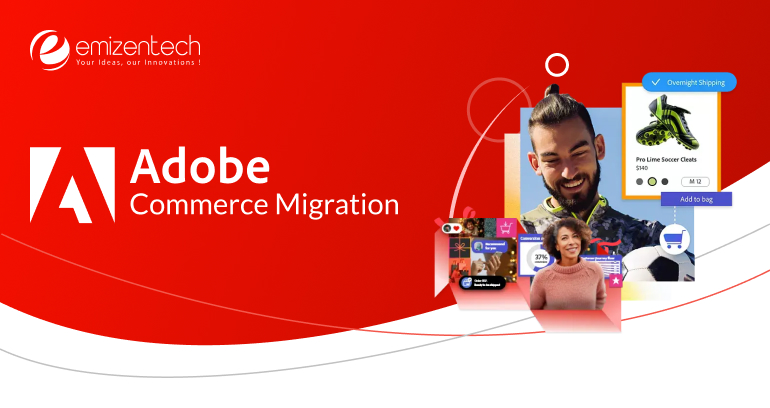Business content management can be complicated and expensive at the same time, especially when you have complex or larger documents. While running an enterprise, you need to ensure that you deliver content securely via multiple channels, whether it’s virtual or physical, and manage your marketing content and assets perfectly.
Adopting a content management system (CMS) can be one of the best options to seamlessly and reliably manage content. In 2023, the worldwide CMS market will attain $19.38, which is likely to reach 27.30 billion by 2028. Around 43.6% of websites are custom-made, making the best use of a CMS. Besides others, Adobe Experience Manager (AEM) is a CMS platform trending to resolve dynamic content issues, extend content for all interactions, and pace content velocity.
How to leverage the benefits of AEM in your business? Well, an Adobe Experience Manager developer can help you.
What is AEM developer? An AEM developer holds specific skills and can build websites and create, manage, and maintain content by exploiting AEM capabilities. But how to hire an AEM developer who can help you with your business objectives?
This blog will discuss AEM developer roles and responsibilities, the best process to hire the right AEM developer, things to consider, explanations of the types of AEM developers, and more.
Let’s get started.
Who Are AEM (Adobe Experience Manager) Developer?
AEM developer assists non-technical people (authors) to build websites and create, manage, and maintain content. So, if one is seeking to ease their website content management and delivery and diminish the online experience delivery complexity, hire seasoned AEM developers.
An AEM developer utilizes the best methodologies and practices to design and implement the right solution for businesses. Besides, they contribute to the whole software development lifecycle, including requirement specification, analysis, technical design, use case and data modeling, development, testing, and implementation.
AEM Developer Roles And Responsibilities
Let’s unwrap the detailed roles, responsibilities, and more that a company should expect from an AEM developer.
- Develop and deploy integrations suiting AEM to attain business needs.
- Work directly with key business and IT stakeholders to accumulate requirements, design, keep track of the design alternatives, offer outstanding solutions and custom approaches, and facilitate discussions.
- Hold technical proficiency in AEM’s performance, integration approach, architecture, and other systems.
- Ensure passing on the expertise to the team, align with standard coding practices, and take accountability for the task assigned.
- Guide junior team members to confirm that the software built follows the best practices and expected quality standards via code and design reviews.

Best Process To Follow To Hire AEM Developer
Hiring an AEM developer can be daunting, especially if you are not an expert at the technology. Let’s make it simple and explore the process of hiring an AEM developer who can help take digital experience ahead of the pack, skills to look for, and more.
Step 1: Define Your Needs – State Your Requirements
When you connect with an AEM development company, you should put forth the business requirements you want to attain from a candidate you choose for your AEM project.
Or, if you prefer to hire an AEM developer from any platform, you should post an AEM job description highlighting on that specific platform your business needs.
Step 2: Screening Resumes – Matching Pattern Between Your Requirements & Their Qualifications
Next, moving ahead, determine whether the potential candidates meet the qualification mandatory for an AEM role based on their education, experience, and relevant information you review on their resumes.
Step 3: Conduct Interview
Ahead, plan a process for conducting AEM candidates’ interviews. For that, consider the below points:
- Choose an interview format.
- Convey your format and expectations during the process.
- Understand the candidate’s career goal, professional interests, etc. (before jumping on a job-specific role).
- Ask role-relevant questions.
- Accumulate the information and insights into their values, experience, and thought processes.
- Allow the candidate to ask questions (about the company, team, position, etc.).
- Describe the steps ahead.
Step 4: Skills to Ask
1. Experience in AEM Development & Customization
The first and foremost aspect you should aim at while hiring an AEM developer is the experience with the platform.
A good candidate will have robust AEM development and customization knowledge and can efficiently work with relevant technologies like HTML, Java, CSS, and JavaScript.
Ask the candidate about their experience with the AEM and its varied aspects, like building components, workflows, templates, and integrations. Also, ask about their obtained certifications related to AEM development.
2. Communication Skills
AEM developers need to perform closely, collaborating with other teams, like design and marketing, to ensure the effective delivery of digital experiences. Thus, the potential candidate must have seamless communication capabilities. You can test that by assessing their communication skills during the interview process.
Besides, interview their working experience in cross-functional teams and check how they communicate complicated technical concepts to non-technical stakeholders. Also, you can give hypothetical scenarios to let them collaborate with other teams and monitor their approach in those situations.
3. Efficient Problem-Solving Skills
You should check the complicated problem-solving skills of the candidate by giving distinctive scenarios. Also, notice how they troubleshoot the integration or performance optimization issues.
Ask them if they have completed any challenging AEM projects and obstacles they overcame during the completion of the project. This way, you will get an idea about their problem-solving proficiency and caliber to work under pressure.
4. Successfully Accomplished Projects’ Portfolio
Before you move ahead with any decision, remember to review the portfolio of past projects completed by your potential candidates to know whether the candidate deserves to be hired and holds the expected working experience.
Besides, get surety about their experience by asking about the challenges they face and strategies they choose to beat them.
5. Test Candidate Skills
By giving hypothetical scenarios to the candidate, you can test the skills of the interviewee essential for the role of an AEM developer.
Last, Step 5: Ask For References
Remember to cross-check the candidate by connecting with the references they provide, be their colleagues or employers they have worked with for successful project completion.
You can ask them:
- Their experience working with their references.
- Their contribution to the project they accomplished successfully.
- Areas in which they excelled.
- Their struggling edges, and more.
This way, you will better understand the candidate who fits your business requirements best, holding the expected skills and proficiencies.
After following the abovementioned process, you can kickstart your AEM project, meeting your every business needs seamlessly.
Things To Consider While Hiring AEM Developer
Besides the roles and responsibilities and hiring process, you should keep track of these things:
1. Adobe Certification
While considering an AEM developer, you must ensure they have earned an Adobe Certification, which is acknowledged as proof of their seriousness towards AEM and relevant services.
Adobe certification showcases the candidate has completed the training and courses relevant to what they are likely to perform for a company that hires them.
Obviously, you will meet other AEM developers without certification, but looking for one with such a document would be a plus for your enterprise.
2. Soft Skills
Technical skills are mandatory to be recognized as a good AEM developer. But, consider a candidate with soft skills as they hold equal importance, especially senior developers or high-authority candidates. These senior leads or project managers are required to work with many stakeholders. So, soft skills hold the priority for a seamless project run.
The candidate can hone and be an expert at technical skills, but soft skills are innate.
Soft Skills required:
- Adaptability
- Dependability
- Problem-solving
- Effective communication
- Teamwork
- Leadership
3. Experience
Besides the Adobe certification and soft skills, the potential candidate needs to have experience with Adobe Experience Cloud.
An AEM developer needs to have worked on Apache Felix, CR, OSGi, Apache Sling, REST, jQuery, JavaScript, JSON, AJAX, HTML, and CSS.
You can ask them about their experience with Adobe and how often they have used this platform.
Types of AEM Developers You Should Know
Well, the topic doesn’t end up with AEM developers; varied types of AEM developers are there who attain distinctive and required business requirements.
Let’s unveil a few below:
AEM Backend Developer
An AEM Backend developer works with a CMS by Adobe, Adobe Experience Manager (AEM) that aims at server-side functionalities to ensure the platform is performing efficiently, delivers the expected content to the front end, and integrates with other systems seamlessly.
Besides, they take care of AEM’s technical aspects, like platform customization, user permissions management, and working with APIs to deliver optimal user experience.
Key Skills For An AEM Backend Developer:
- Expert knowledge of AEM, including its architecture, components, templates, and workflows.
- Proficiency in Java programming as AEM is based on Java.
- Proficient at building tools like Maven and the OSGi framework used chiefly on AEM development.
- Mastery of JCR (Java Content Repository), an AEM storage system that helps manage content.
- Expert at integrating AEM with other platforms and systems using APIs.
- Understanding of Sling Framework, a web framework AEM uses to map the content repository to HTTP, easing content access.
- Best at writing and executing tests, ensuring reliable backend functions.
- Knowledge of Performance Tuning that confirms AEM platforms run efficiently, handle traffic, and revert speedily to user requests.
- Assure content and user data safety and security, making certain no unauthorized access is entertained.
- Familiar with Continuous Integration/Continuous Deployment (CI/CD) tools and practices to integrate and deploy code modifications when needed.
AEM Frontend Developer
In the digital world, the artists who contribute to crafting engaging layouts, smooth animations, and vibrant images are known as AEM front-end developers. While the AEM backend developer looks after the organization of an app, the AEM frontend developer ensures showcasing the app elements beautifully and easing the navigation.
In the case of AEM, the front-end developers create the websites’ visuals and interactive parts using varied tools to deliver a seamless and delightful user experience.
Key Skills For An AEM Frontend Developer:
- Understanding of AEM UI Frameworks.
- Best at HTML/CSS/JavaScript.
- Creates responsive designs for apps and websites to ensure their smooth working across varied screen sizes and devices.
- Know how to create and manage AEM client libraries.
- Master AEM component development.
- Design & customize user-friendly AEM UI.
- Understanding of Adobe Coral/Granite UI Framework
- Cross-browser Compatibility
- Consider accessibility aspects while designing and developing sites and apps.
- Web Performance Optimization
- Smooth integration with AEM Backend.
- Expert at using Version Control/Git to track changes, manage code, and collaborate with others.
AEM Headless Developer
AEM Headless developer is quite popular among enterprises looking to deliver content to the front end by decoupling backend from the presentation layer to make both the peers unaffected by each other.
This way, they help in rapid content delivery, improved scalability, and greater flexibility, considering better user experience.
AEM provides numerous tools to accomplish this objective, and the headless developer ensures content is available worldwide without getting stuck with a layout or look.
Key Skills For An AEM Headless Developer
- Knowledge of Headless CMS Concepts
- Expert at RESTful APIs and GraphQL
- Knowledge of AEM Content Fragment Models for designing and managing content in a reusable and flexible way.
- Proficiency in JSON and XML for headless content transmission.
- Knowledge of integration of AEM’s content with different platforms, devices, and apps.
- Confirm content delivery securely, preventing unauthorized access.
- Mastery in performance optimization for swift content delivery.
- Best at Version Control/Git to manage and track modifications in code and configurations.
- Continuous Integration/Continuous Deployment (CI/CD)
- Understanding of Frontend and Backend Development
AEM Forms Developer
An AEM Forms Developer is responsible for offering sleek, easy-to-understand, and interactive digital forms on a screen. Some call them the digital architects who craft and develop such interactive forms using AEM. Their role is to ensure that the users sign up for a newsletter, register for an event, or apply for a job just by witnessing functional, efficient, and user-friendly digital forms.
Key Skills For An AEM Forms Developer:
- Deep knowledge of AEM forms.
- Follow form design principles to create visually appealing and user-friendly forms.
- Create an adaptive and responsive design.
- Best at integrating forms with other systems.
- Exploit JavaScript and form scripting to append interactivity, improve user experience, and validate user input.
- Expert at using XML and XDP design to craft and structure data.
- Knowledge of workflow design.
- Ensure data security.
- Understanding of backend systems.
- Hold a constant learning attitude.

Why Choose Emizentech to Hire AEM Developer?
Having years of experience, we offer AEM services, ensure our AEM developers meet your business requirements and specialize in working with Adobe and its products. Whatever your business requirements, we hold the right talent for you.
Our Adobe Certified AEM developers are:
- Well-experienced
- Troubleshooting and problem-solving ability
- Seamlessly collaborate with teams and clients.
- Best at communication.
- Deal with tailoring priorities.
- Have speed optimization knowledge
Hiring our AEM developers will ensure your digital content’s effective creation, management, and maintenance.
Final Verdict
So, you can hire Adobe AEM developer considering various factors and following the process we discussed in this blog, like problem-solving, soft skills, experience, certification, and more.
This way, you will find the right AEM developer for your enterprise who can help you attain your business requirements while taking your company to a level ahead.
Connect with an AEM consulting company today!





 USA
USA UK
UK